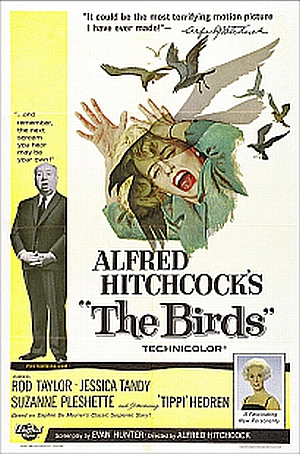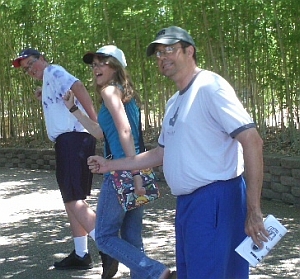 Here’s my piece written for the latest Game Geek.
Here’s my piece written for the latest Game Geek.
Since the earliest days of RPGs, mythology has provided fertile soil for the gamer’s imagination. Recently, I started re-reading Samuel Butler’s prose translation of The Iliad. Somehow, this bizarre passage from the beginning of Book III had managed to slip under my oddness radar during previous readings:
“When the companies were thus arrayed, each under its own captain, the Trojans advanced as a flight of wild fowl or cranes that scream overhead when rain and winter drive them over the flowing waters of Oceanus to bring death and destruction on the Pygmies, and they wrangle in the air as they fly; but the Achaeans marched silently, in high heart, and minded to stand by one another.”
Yes, you read that correctly. Homer compares the Trojans to screaming flights of birds that kill and destroy Pygmy society every winter. Which got me to thinking: What would that look like in a game?
Step the First
Whenever I create a new creature, I look for an already made monster that I can reskin and refluff. In game terms, it’s obvious Homer describes some sort of swarm. I searched through d20pfsrd.com for swarms, looking for those that could fly.
After browsing through swarms of wasps, hellwasps, bats, botflies, locusts, and mosquitos, I decided that the bat swarm was the best place to start. Studying the bat swarm’s stat block revealed several areas that needed to be changed.
First off, the bats are too small. I don’t want a swarm of Diminutive birds. Perilous parakeets or bloodthirsty budgies aren’t what I’m looking. The largest creature that has swarm traits are Tiny. That’s roughly the size of a housecat, which seems right to me.
So, I slap the Giant creature simple template on the bat swarm. This bumps the individual animal’s size up to Tiny. I adjust ability scores and add a natural armor bonus. I don’t bump up the swarm’s damage, however. Swarm damage is linked to swarm Hit Dice rather than size. Next I remove the bat swarm’s wounding special ability. I don’t want it too obvious that my bird swarm is really just a bat swarm with some minor modifications.
Examining the altered stat block, I feel that I’m off to a good start, but my bird swarm doesn’t look like something that could “bring death and destruction” to an entire people. Civilization-threatening invasions of monsters should inspire a little more terror than what a slightly tweaked bat swarm delivers.
Since I like templates, I figured it wouldn’t hurt to browse through the rest of them. I hadn’t scrolled down far when I found what I was looking for: the Apocalypse Swarm template from Green Ronin’s Advanced Bestiary. More stat block adjustments ensued.
Adding the Giant Creature and Apocalypse Swarm templates to a bat swarm should give me a CR 6 monster. I need to compare the stat block to the parameters for that CR. Indeed it seems as if CR 6 is about right on target.
Step the Second
I’ve reskinned the stat block. Now it’s time to refluff the monster. I need some introductory descriptive text and to make sure my new stat block is complete and well-formatted. Here’s the final product:
The sky goes dark. A cacophony of squawks, caws, and shrieks competes with the thunderous flapping of a hundreds of wings. The birds! The birds have returned, and death comes with them!
Apocalpytic Flight of Wild Fowl
CR 6; XP 2,400
N Tiny animal (swarm)
Init +3; Senses low-light vision; Perception +17
DEFENSE
AC 19, touch 16, flat-footed 15 (+3 Dex, +1 Dodge, +3 natural, +2 size)
hp 68 (8d8+32); fast healing 10
Fort +9, Ref +11, Will +4
Defensive Abilities half damage from slashing and piercing weapons, swarm traits; SR 19
OFFENSE
Speed 20 ft., fly 120 ft. (average)
Melee swarm (3d6)
Space 10 ft.; Reach 0 ft.
Special Attacks fear (DC 12), greater distraction (DC 19)
STATISTICS
Str 7, Dex 17, Con 17, Int 2, Wis 14, Cha 7
Base Atk +6; CMB –; CMD —
Feats Ability Focus (greater distraction) (B), Dodge, Lightning Reflexes, Mobility, Toughness
Skills Fly +14, Perception +17; Racial Modifiers +8 Perception
SQ swarm traits
SPECIAL ABILITIES
Fear (Su): Each creature within 100 feet of a flight of wild fowl that witnesses it bringing down another creature must succeed on a Will save (DC 10 + 1/2 flight’s HD + flight’s Cha modifier) or be frightened for 1 minute. Success leaves the creature shaken for 1 minute but does not negate the need to make a new saving throw for each such incident. Fear is a mind-affecting fear effect.
Greater Distraction (Ex): A creature that fails its save against a flight’s distraction special attack is nauseated for 1d4 rounds.
Splitting (Ex): When a flight of wild fowl takes more than 10 points of damage from a single attack, it splits into two identical flights, each with one-half the hit points that the original flight had when it split (rounded down). A flight of wild fowl with 1 hit point cannot be split, and one with 0 hit points is dispersed as normal. Each piece of a flight of wild fowl can heal damage normally, up to the number of hit points it had upon formation. Healing damage does not allow the flights to recombine. For example, a flight of wild fowl with 68 hit points that takes 15 points of damage would split into two flights with 26 hit points each (one-half of the original flight’s remaining 53 hp, rounded down). Each of these two flights of wild fowl can heal 10 points of damage per round with fast healing, but it cannot exceed 26 hit points.
ECOLOGY
Environment any temperate or tropical
Organization solitary, pair, flock (3-6 swarms), or apocalypse (11-20 swarms)
Treasure none
Step the Third
Now that I’ve got a scary swarm inspired by one of the enduring classics of Western literature, I need to unleash these monsters on my unsuspecting players. Fortunately, the next leg of my campaign takes the adventurers into a northern forest region where the PCs hope to thwart a dark elf plot to turn an annual winter festival into an orgy of death and terror. It ought not be hard to work at least one of my new swarms into the scenario.
Tags: Game Geek
 Yes, you too can now partake vicariously of the Chance Family experience and get some free game crunch at the same time. Download your own PDF copy of A Gamer Goes on Vacation today. This 9-page PDF offers such excellent features as:
Yes, you too can now partake vicariously of the Chance Family experience and get some free game crunch at the same time. Download your own PDF copy of A Gamer Goes on Vacation today. This 9-page PDF offers such excellent features as: Here’s my piece written for the latest
Here’s my piece written for the latest 